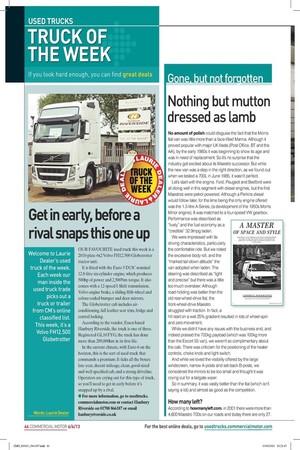Nothing but mutton dressed as lamb No amount of polish
Page 37

If you've noticed an error in this article please click here to report it so we can fix it.
could disguise the fact that the Morris Rai van was little more than a face-lifted Marina. Although it proved popular with major UK fleets (Post Office, BT and the AA), by the early 1980s it was beginning to show its age and was in need of replacement. So it's no surprise that the industry got excited about its Maestro successor. But while the new van was a step in the right direction, as we found out when we tested a 700L in June 1985, it wasn't perfect.
Let's start with the engine. Ford, Peugeot and Bedford were all doing well in this segment with diesel engines, but the first Maestros were petrol-powered. Although a Perkins diesel would follow later, for the time being the only engine offered was the 1.3-litre A-Series, (a development of the 1950s Morris Minor engine). It was matched to a four-speed VW gearbox. Performance was described as "lively" and the fuel economy as a "credible" 32.9mpg laden.
We were impressed with its driving characteristics, particularly the comfortable ride. But we noted the excessive body roll, and the "marked tail-down attitude" the van adopted when laden. The steering was described as "light and precise" but there was a little too much oversteer. Although road-holding was better than the old rear-wheel-drive Rai, the front-wheel-drive Maestro struggled with traction. In fact, a hill start on a wet 25% gradient resulted in lots of wheel-spin and zero movement.
While we didn't have any issues with the business end, and indeed praised the 700kg payload (which was 100kg more than the Escort 55 van), we weren't so complimentary about the cab. There was criticism for the positioning of the heater controls, choke knob and light switch.
And while we loved the visibility offered by the large windscreen, narrow A-posts and set-back B-posts, we considered the mirrors to be too small and thought it was crying out for a tailgate wiper.
So in summary, it was vastly better than the Rai (which isn't saying a lot) and almost as good as the competition.
How many left?
According to howmanyleft.com, in 2001 there were more than 4,600 Maestro 700s on our roads and today there are only 27.










































